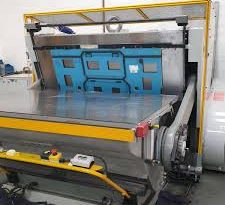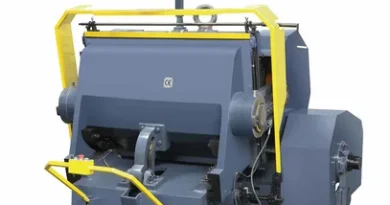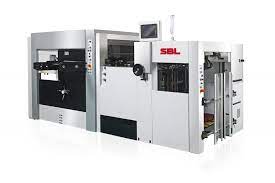The Strategic Impact of Die-Cutting Machines on Production Lines
Introduction: Die-cutting machines are pivotal in modern production environments, where they contribute to enhanced operational efficiency and product diversity. These machines, which utilize precise cutting dies to shape and form various materials, are integral in industries ranging from packaging to automotive manufacturing. This article will explore the strategic advantages of integrating die-cutting machines into production lines, highlighting their efficiency, precision, and versatility.
What is a Die-Cutting Machine? Die-cutting machines are designed to cut, shape, or perforate materials like paper, cardboard, metal sheets, and textiles with exact precision using a shaped die. They can be operated manually or automated for high-volume manufacturing, with some machines incorporating advanced digital controls to optimize cutting paths and minimize waste.
Key Features:
- Automated Functionality: Many die-cutting machines today are automated, featuring digital interfaces that allow for precise adjustments and control over the cutting process.
- Material Flexibility: These machines can adapt to various materials, performing intricate cuts that would be difficult or impossible by hand.
- Rapid Production Capability: Die-cutting machines significantly speed up the production process, enabling rapid output that supports high-demand cycles.
- Design Adaptability: The ability to quickly swap out dies makes it possible to shift production among different products or customize designs without substantial downtime.
Benefits of Die-Cutting Machines:
- Enhanced Productivity: With swift cutting speeds and less manual intervention, die-cutting machines drastically improve production rates.
- Reduction in Overhead Costs: Automated die-cutting reduces the labor intensity of production processes, lowering overhead costs and enhancing profitability.
- Superior Product Quality: The precision of die-cutting ensures products are consistently manufactured to exact specifications, reducing waste and increasing customer satisfaction.
- Innovation and Customization: The flexibility of die-cutting machines supports innovation by allowing manufacturers to experiment with different materials and designs efficiently.
Industrial Applications:
- Electronics Manufacturing: For cutting insulating materials, circuit boards, and other electronic components.
- Medical Devices: Used in producing medical pads, seals, and other devices where precision cutting is critical.
- Arts and Crafts: Essential in the creation of detailed paper products, stickers, and decorative items.
- Automotive Components: Involved in cutting composite materials, interior coverings, and other parts requiring high durability and precision.
Conclusion: Die-cutting machines significantly influence the efficiency and versatility of production lines across various industries. Their ability to provide precise, quick, and repeatable results makes them indispensable in today’s manufacturing sector. By enabling higher throughput with lower costs and enhanced quality, die-cutting machines offer a strategic advantage that can propel businesses to new heights of operational success and innovation.



